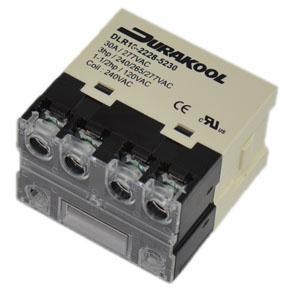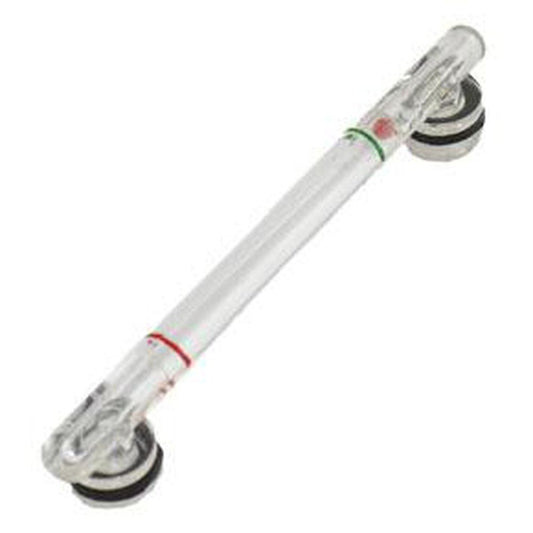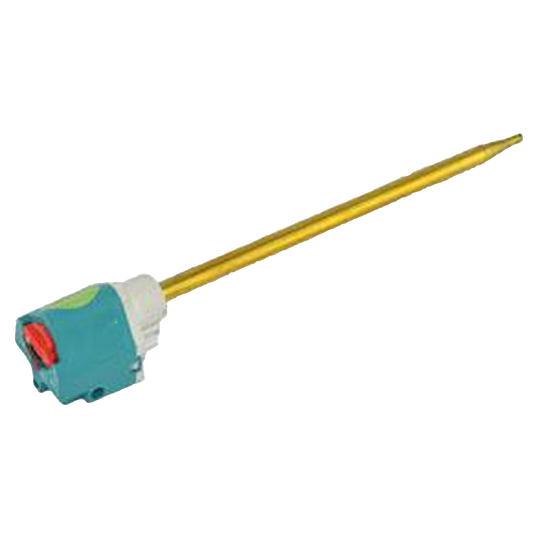
Welcome to Gledhillpulsacoil.com
A lot of people might have a hard time wrapping their heads around what a PulsaCoil is, but don't worry – we're here to help as much as we can, so you can get back to doing what you love best.
Gledhill Pulsacoil Parts & Spares
-
Gledhill Pulsacoil Pump XB004(Replacement Pump) XB1016
Regular price £169.70 GBPRegular priceUnit price / per£199.60 GBPSale price £169.70 GBPSale -
Gledhill Pulsacoil Power Relay XB178
Regular price £16.40 GBPRegular priceUnit price / per£19.29 GBPSale price £16.40 GBPSale -
Gledhill Pulsacoil Sight Glass XB443
Regular price £13.30 GBPRegular priceUnit price / per£15.68 GBPSale price £13.30 GBPSale -
Gledhill Pulsacoil Thermostat Rod XB081
Regular price £19.31 GBPRegular priceUnit price / per£24.15 GBPSale price £19.31 GBPSale
-
Pulsacoil 1 & 2 Parts and Spares
Pulsacoil 1 & 2 RepairIs your Pulsacoil not working? Or maybe you need more information on it? We can also help. Call us or email us today for help. Click on our link to find out more.
-
Pulsacoil 3 Parts and Spares
Pulsacoil 3 RepairWe offer a complete repair solution service for the Pulsacoil 3 system. We also provide information and a Pulsacoil 3 replacement option for you. Try us.
-
Pulsacoil 2000 Parts and Spares
Pulsacoil 2000 RepairHas your Pulsacoil 2000 stopped working? We can help. Or maybe you need more information on it? We can also help. Call us or email us today for help.
-
Pulsacoil A Class Parts and Spares
Pulsacoil A Class RepairThe Pulsacoil A Class doesn’t have to be complicated. We are experts when it comes to the Pulsacoil A Class. For repair, information and more call us.
-
Pulsacoil BP Parts and Spares
Pulsacoil BP RepairOffering a complete repair solution for the Pulsacoil BP. We also provide information & a Pulsacoil replacement option tailored specially for your needs.
-
Pulsacoil Stainless Parts and Spares
Pulsacoil Stainless RepairPulsacoil Stainless not working? Let us help you. Or maybe you need more information about your PCS system? We can provide it. Email us today.
Pulsacoil 1, 3, 2000, A Class, BP, Stainless and Stainless ECO Parts and Spares
For many people, understanding what a PulsaCoil actually is can be a bit of an issue. It’s a common term that people have heard but probably aren’t 100% sure what they are looking at, or for. To help you understand and ascertain what a Gledhill PulsaCoil is, and why you need one, this has been specifically prepared for your assistance.
So, what is a “pulsacoil” and why do people choose them?
PulsaCoil is a thermal store instead of the more traditional hot water cylinder storage that many people will use. When using a thermal store, then you do have a very similar process to the traditional methods of storage. The container is loaded with hot water, sure, but after this point it all changes in comparison to what other heating systems tend to do.
Instead, the water maintains a consistent and constant temperature afterward – whilst the heat can be changed via a thermostat rod setting, it shouldn’t be, put simply. The heat stored inside is then used to heat up water. When passing through the heat exchanger with the help of the mains water pressure with the assistance of a powerful heat exchanger system. This means that hot tap water is provided at the same flow rate,power and energy as your full mains pressured water, adding greater authority and power to your water systems and does not require a pump to get the water pushing through your taps or showers.
However, the main issue when buying or having a Gledhill PulsaCoil system repaired is that they tend to be pretty confusing. With seven different versions to take into account, here are the major differences and/or similarities.
Whilst only the Gledhill Pulsacoil Eco Stainless is available for purchase today, you can have the others repaired, managed and maintained as needed. If you use any of the options below apart from the final two, then you most likely have the older versions of these systems.
Why Do So Many Gledhill Pulsacoil Parts and Spares Exist?
A common question that we tend to hear from clients is their wonderment at why so many versions exist. After all, on a quick glance they all appear to be very similar. Whilst the Pulsa Coil grouping may be very different from a normal heating system, the similarities between each sub-section can be hard to decipher at first.
One of the main reasons has been the mere passage of time and the development of new systems as time has gone on. Each of the systems above were created at varying times, with the latest being the 2015 Eco Stainless. For example, the difference between the 2014 Stainless and 2015 Stainless Eco are quite hard to tell.
The main difference is the use of low energy, high-efficiency parts that are now being used, showing further developments in hardware efficiency and costs facilitated a new design.
This is a common trend within the grouping – just know that whatever version of Pulsa Coil you want to look into, you’ll find that it provides a useful service.
Avoiding Typical Problems With A Gledhill Pulsacoil
Now, one issue that has to be addressed is that – regardless of the system used – some common problems can exist. While we’ve broken down more about each of the systems on their individual pages, some of the errors which can be nearly universal across the systems include:
Sensory Failures. When this happens your Gledhill PulsaCoil system will not be able to find the hot water itself in the system. This usually means that the pump control speed is not receiving the instruction to send the correct power supply to the pump itself. This is a hardware issue and best dealt with by a proven specialist. Hardware problems can be nearly impossible to fix on a DIY basis here.
Thermostat Issues. Since all models also use a thermostat in one form or another (Referring to the A-Class), it becomes useful to know that it can be one of the main factors in any problems faced. The thermostat can go and this will mean that the relay becomes disabled, cutting off the power supply to the most needed parts of the hardware. Once this occurs, you are likely to have no power reaching the system. Again, you will have to get an expert out to take a look – these issues can be caused by a myriad issue of problems, both minor and major. Allow a Gledhill PulsaCoil specialist to take a look.
Pump Speed Failure. Another major problem that you will likely come across at least once is pump speed control failure. When this happens the pump is no longer being supplied with power. Therefore, no water actually comes through. When this happens you should look for any obvious blockages. If you cannot find one, enlist the help of a professional Gledhill PulsaCoil operative.
The Biggest Gledhill Pulsacoil Problem To Avoid
Yes, there is one big problem. It is overlooked time and time again. It is so simple to fix you would be shocked. This problem is the header tank water level. A common issue is the header tank losses water due to many reasons. By keeping this half way full you will help reduce problems which could occur and prolong the life of your gled hill pulsa coil.
As you can see from the above, some common issues exist across each range. However, other problems can exist for each model and you would do well to look further into what potential problems may pop up.
PulsaCoil 1 & 2 - The First Gledhill Pulsacoil Produced
The Gledhill Pulsacoil is the original in the system, and probably the most commonly known of the systems out there to pick from after the PulsaCoil 2000. The original system itself is very easy to manage, too. From managing Gledhill PulsaCoil installation to actual usage, the whole process can be very much stress free.
The original system works very basically – and very well. It starts off with an extremely powerful immersion heater located at the bottom of the cylinder, which begins to heat up the water inside the thermal store accordingly. Then, heat is transferred from the tap by passing it, via the cold mains water, through the coil piping inside the Pulsa Coil itself.
Once the heat passes through the tubes, it uses the tube walling to transfer heat and heat up any water which is coming out of the cold mains en route to getting to the hot water tap. This means that you can see consistent pressure and temperature, unlike inconsistent and annoying boiler installations. It is worth knowing that if this problem does occur and you have a Gledhil PulsaCoil, the most likely your water level in the copper based cylinder is far too low.
PulsaCoil 3 - Second In The Gledhill Pulsacoil Series
The Gledhill PulsaCoil 3, though, is a little different to the first edition of the hardware. The PulsaCoil 3 works instead by looking to make a heat transfer into the tap water by using the power of a pump and a plate exchanger. The exchanger, a simple block of thin, stainless steel plating, will ensure that alternate space is created for the hot and cold water respectively. Whilst the heat may be transferred from the plates to heat up the cold mains water in no time at all, you can still get access to the cold water at the same time. The pump is used to circulate the hot water stored in the thermal store through the plate heat exchanger.
This all works out through use of a smart flow-switch, which detects when hot or cold water is being requested. Stored hot water will come through, heating it and sending it through at the speed requested thanks to the use of modulators. This allows for easy management of temperature and also pump speed to be at the exact levels that you wanted. Best of all, this rendition of theGledhill PulsaCoiltech makes use of a heat exchanger and a thermostatic blender valve also known as the Brawa mixing valve. This allows water to be regulated at a temperature that makes it warm without ever being too hot.
PulsaCoil 2000 - Most Common Gledhill Pulsacoil Found
The Gledhill PulsaCoil 2000 is very similar in the way that it operates when compared to the Gledhill PulsaCoil III/3. It offers a similar idea using the plate hate exchanger system to make the heating go through. This means that the heat plate, a very thin piece of stainless steel, works hard to maximise and then regulate temperature efficiency. Once managed, the heat will follow the same process and transfer via the plates to heat up the mains water on the way to the tap.
However, one of the major changes in the 2000 in regards to the Pulsa Coil III installation is that it’s proportional in terms of how it operates itself. The way that it works is quite simple – the bigger the temperature falls that the thermistor notices, the larger the circuit board operation will be to make up for the drop in temperature. It makes up by increasing the speed of them pump allowing greater amounts of heat transfer.
This allows for fully safe and utterly regulated to be produced at all times by the 2000. This means that you can manage a safe and easy flow rate, as well, as many people find that similar systems are too unregulated in terms of flow speed. The 2000 manages to fill in that hole and ensures that it remains a popular design fundamental for people looking to turn to this system type of system in the near future.
Whilst a PulsaCoil specialist is needed to make sure that your 2000 is installed right due to its pernickety style, it’s a system well worth considering for continued and prosperous heating. So if you have one don't give up on it easily.
PulsaCoil A Class - Gledhill Pulsacoil 2000 Improved System
The Gledhill PulsaCoil A-Class comes with a rather fantastic name – and it does what it suggests. This is, for many, the elite of the PulsaCoil family. Using the same powerful system as the 2000 and 3, this works very effectively when it comes to establishing and mastering a water heating system.
By making use of the same alternation system this allows for easy and effective flowing through different spaces. This makes sense for so many reasons, not least because it will allow you to go through with faster and more efficient heat transfers than you would with a traditional heating system.
For this reason, lots of people are making the Gledhill PulsaCoil A-Class the best system Gledhill have produced in their Pulsacoil series. However, despite being a relatively newer model to the Pulsacoil 2000 and Pulsacoil 3, the A-Class does come with some issues you should be aware of before wishing you had this system. For one, look out for the regular flashing of a small, red LED light. This is a common problem and one of the most likely issues you will face when trying to get this tool to operate as it should.
The red lighting, when you see it, means that there is a fault with the hardware. Sometimes, though, it can be an ironic mechanical fault that causes the A-Class to start flickering even when operations are fully normal. The flashing red light on earlier versions simply was showing the user that it was cooling down accordingly, and was ready to be re-heated when it was to be required.
Make sure you find out what model you are using – the incorrect use of LED lighting is an issue that can become confusing. Before you decide to get your system looked into to ensure that it works as it should, make sure you consider how old you’re A-Class model is.
PulsaCoil BP - Avatar Of The Gledhill Pulsacoil
The Gledhill PulsaCoil BP was becoming a popular selection for many people, not least because it offers such a high level of efficiency when being used. Although depleted water in the thermal store can be a minor issue, it’s very easily solved. You can fill the water yourself if need be, or you can wait for it to be done automatically (this does need mains power to do so) making it easier to manage with and use.
The BP works in the same way as the traditional PulsaCoil system would have worked – by making use of coils thanks to the use of the valve output temperature being modifiable. These coils, then, offer a simple and effective way for you to keep the water nice and warm on a consistent and simple basis. Also, you can easily adjust the temperature by playing with the valve output system to adjust for fitting temperatures.
This makes it easy for you to manage and master your Gledhill PulsaCoil BP to fit the temperatures and depth that you are willing to go through with. As such, you can make sure you have a system which is a consistent and productive tool with only minimal potential problems waiting.
Even though it was a easy system to manage, there were a few draw backs in the design. Due to the coil being internal, if blockages occurred due to calcium build up it you would need to replace the entire cylinder. Also if the coil leaked this would cause water to overflow through the header tank.
Gledhill Pulsacoil Stainless - Latest of the range
Gledhill Pulsacoil Stainless provides a stainless steel finish cylinders and externally looks fantastic with their white finish. The stainless steel and exterior design makes a very impressive finish, far more professional than before, and, as the name suggests, does not become stained internally and chances of leaks dramatically reduce from consistent use. This means that over the period of a number of years, your stainless options will retain their same depth that made it stand out so much in the first place. Thanks to this you can rest assured that this new system will less likely leak than the previous ones.
However, you should speak to a PulsaCoil specialist before making any calls regarding whether or not the PulsaCoil Stainless and/or Eco Stainless options are going to be a smart investment for you personally. Either way, you will find that both provide an easy enough solution to turn to when you need a cost-effective water heating solution. Also customers with Gledhill Pulsacoil and Pulsacoil 3 may require a different type of system due to their size.
Gledhill PulsaCoil Eco Stainless - Advanced with ECO features
Gledhill PulsaCoil Eco Stainlessprovide a stainless steel finish cylinders and externally looks fantastic with their white finish. The stainless steel and exterior design makes a very impressive finish, far more professional than before, and, as the name suggests, does not become stained internally and chances of leaks dramatically reduce from consistent use. This means that over the period of a number of years, your stainless options will retain their same depth that made it stand out so much in the first place. Thanks to this you can rest assured that this new system will less likely leak than the previous ones.
However, you should speak to a PulsaCoil specialist before making any calls regarding whether or not the PulsaCoil Stainless and/or Eco Stainless options are going to be a smart investment for you personally. Either way, you will find that both provide an easy enough solution to turn to when you need a cost-effective water heating solution. Also customers with Gledhill Pulsacoil and Pulsacoil 3 may require a different type of system due to their size.




